China, Tibet. Tsaparang was the secular capital of the former kingdom of Guge in western Tibet. The seat of the king was at that time the citadel. This fortress from the 9th century is enthroned high up on a 200 meter high mountain. An ascent to the citadel is strenuous, but you will be rewarded with breathtaking views and insights into the history of western Tibet. In my following article you'll read why a visit to the ruins of Tsaparang should definitely be on your to-do list for Tibet and what you can see here in the forgotten kingdom of Guge.
Non-solicited, unpaid advertising. This article contains affiliate links*, marked with an asterisk.

A mountain as a monastery
The mountain on which the citadel is enthroned is divided into three areas. At the bottom is the monastery complex. Of this, four temples are still well preserved and can be visited. In the middle part of the mountain, however, hundreds of residential caves were dug into the sandstone. Here the monks lived at that time. There are also ruins of houses here. Remains of clay walls form bizarre, labyrinthine structures. The caves were still inhabited until the 17th/18th century, even after the decay of the Guge Empire. Numerous narrow paths lead between the houses.
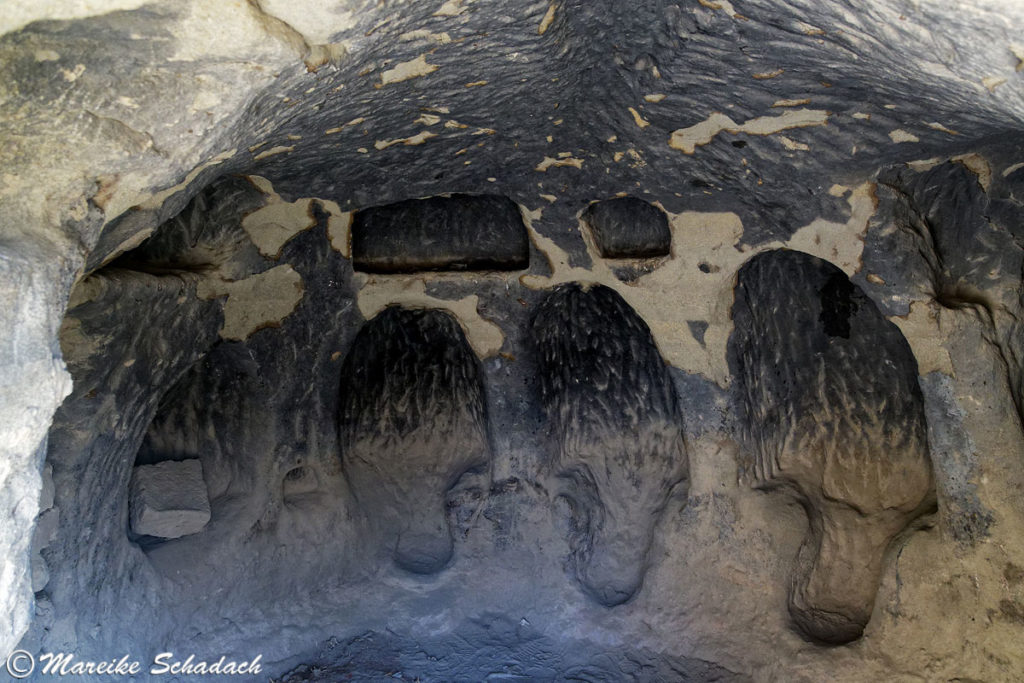
At about half the height of the mountain, you will find remains of the last building that was built during the time of the kingdom of Guge. However, the attackers, the Ladakhis, built it. This is recognizable by the completely different architectural style of the walls. In the 16th century Guge was conquered until here. However, the advance to the well protected fortress proved to be too difficult, so that the Ladakhis besieged the fortress from here.
Long tested and much loved: my three companions on photo tours: the lightweight carbon tripod CT-5C I from Rollei*, the cleaning kit from Rollei*and my indestructible camera backpack, the camera backpack, the Flipside from Lowepro*.
The royal Fortress of Tsaparang
The stairs and paths to the top of the mountain lead to the fortress. They are carved into the sandstone and sometimes run tunnel-like through the mountain. The fortress consists of three buildings: the Summer Palace, the Mandala Palace and one level below the Winter Palace. The Winter Palace is carved into the rock for better heat storage and has windows on only one side. From here there is also a secret escape tunnel. At the same time this tunnel secured the water supply in times of siege. Unfortunately the buildings were locked during our visit.

At the top there is a breathtaking view of the Sutlej valley. At the top there are countless prayer flags, which move up and down in the wind like waves. A magical place that I didn't want to leave anymore.

The White Temple of Tsaparang
The White Temple (Lhakhang Karpo), built in the 15th to 16th centuries, contains the oldest wall paintings of Tsaparang. They are also one of the few preserved works in the old Kashmir art style. This is particularly recognizable by the slender figures, narrow waists and long fingers. In addition to the murals, the White Temple also contains extremely impressive ceiling paintings and ornately decorated wooden columns. The temple is the most important temple in western Tibet. Before the Cultural Revolution it housed 22 statues. Today, however, only 10 figures, some of them badly damaged, can be seen. Among them are 7 of 16 Boddhisatva statues, as well as two protector statues at the entrance of the temple. These were reconstructed on the basis of old photographs. The Buddah figure and all other statues opposite the main entrance are missing. Instead, numerous holes can be seen on the wall in which the figures and the garlands surrounding them were previously anchored.
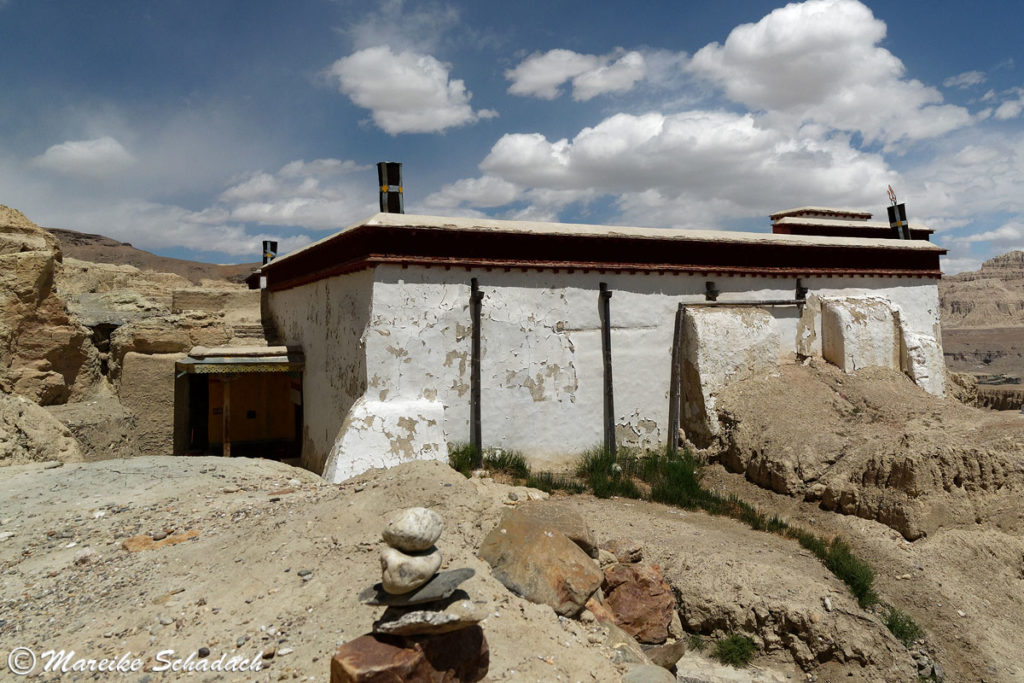
The Red Temple of Tsaparang
The Red Temple (Lhakhang Marpo) was built around 1470. However, the murals were painted shortly before the fall of the kingdom of Guge in about 1630. They show scenes from the construction of the temple and also from the life of Buddha. At the entrance you can see the Green and White Tara as well as eight Stupas. The latter symbolize the eight events in Buddha's life. As in the White Palace, the roof of the temple is supported by elaborate wooden columns and is also decorated with impressive ceiling paintings. Opposite the entrance all Buddah and Boddhisatva statues are destroyed. Their remains are piled up in the middle of the temple, the heads of the figures partly enthroned on the rubble heap.


Tips for the ascent to the Citadel
Plan at least half a day to visit the ruins of Tsaparang in the Kingdom of Guge. Even though Tsaparang is "only" about 3,800 m above sea level, the ascent is quite breathless. So take your time to stop by for a few more times (there are plenty of great photo opportunities). What's also important: on the way and above there are no possibilities to buy water. There are no toilets either.

Book Recommendations for Tibet
You want to know where the journey goes? Then I can recommend these books* about Tibet.
You can order these books at Amazon with a click on the pictures. If you buy a product via one of these affiliate links, I get a small commission and you help me to keep filling Fernweh-Motive with interesting articles. The product will not be more expensive for you.
Have you ever been to Western Tibet and visited the ruins of Tsaparang? How did you like it? Do you have any questions about my article or suggestions? If so, please write me a comment!
Do you want to know when there are new articles on my blog? Then follow me on Facebook, Pinterest or Instagram. I would also be very happy if you share my article with your friends.
Recommendations for further Reading
Are you as fascinated by the mountains in Tibet as I am? Then you will like my two articles about a Trekking Tour around Mount Kailash or about the highest Monastery in the World at the Foot of Mount Everest..


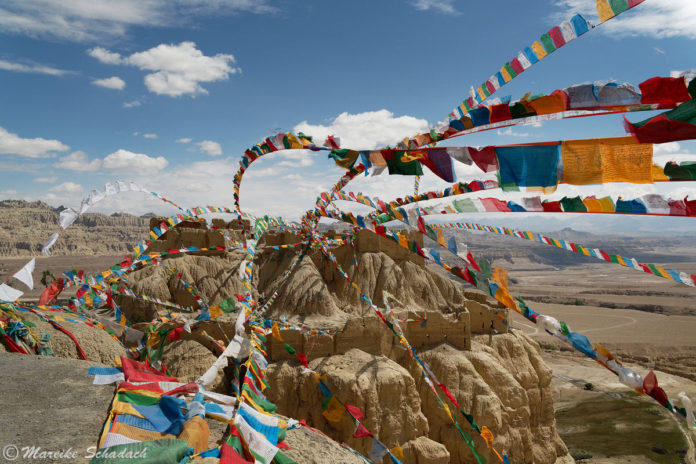






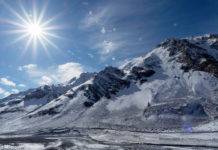
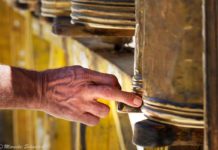



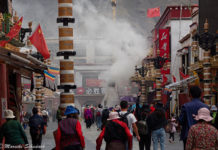
Hallo Mareike – toll dein Tsaparang Artikel. Ich war dort 1986 und 1987 und habe mit hunderten Fotos innen die damalige Kunst an den Wänden und von den teil-zerstörten Buddha-Figuren mit meiner Mittelformat Kamaera (damals alles analog) dokumentiert, auch 2 Bücher darüber veröffentlicht. Mich interessiert brennend wie es jetzt innen in den Tempelanlagen aussieht: Darf man alle Tempel innen besuchen und fotographieren? Sind die Wandmalereien und die Buddhafiguren alle restauriert? Hast Du das alles gesehen? Du zeigts in deinem Reisebericht nicht ein einziges Bild aus den Innenräumen? Freue mich auf deine Antwort – beste Grüße, Jürgen Aschoff
Hallo Jürgen,
ganz lieben Dank für Dein Kommentar und Feedback. Tsaparang / Guge war ein wirklich eindrucksvoller Ort. Wir waren als geführte Gruppe und haben zwei Tempel von innen anschauen dürfen, den roten und den weißen. Und dann waren wir noch ein einem kleinen Tempel, dessen Namen ich jedoch nicht mehr weiß. Mehr war für uns nicht von innen zugänglich, nur noch der Außenbereich bis hoch zur Zitadelle.
Das Fotografieren war im Innenraum leider nicht erlaubt, es war auch ein sehr pflichtbewusster Aufpasser im Raum, dem nichts entgangen wäre. Das einzige Bild, das ich vom Innenraum habe machen können, ist die Aufnahme von draussen durch die geöffnete Tür. Ich habe noch einen Artikel über Guge, wo ich dies beschrieben habe, womöglich hast du ihn nicht entdeckt (und ja, vielleicht sollte ich Aufteilung mal überarbeiten) https://fernwehmotive.de/koenigreich-guge/
Die Zerstörung war noch sehr deutlich zu sehen. Der Schutt war teils abtransportiert, teils aufgetürmt und mit Köpfen der Statuen dekoriert. Nur einige Statuen waren anhand alter Bilder schon rekonstruiert worden. Ich hab in meinem Artikel einige Zahlen genannt, vielleicht hilft dir das, einen Eindruck zu bekommen. Die Wand- und Deckengemälde waren noch / wieder gut zu sehen. Inwieweit alle restauriert sind, oder ob diese die Zerstörugn überstanden haben, kann ich leider nicht sagen. Es war auf jedenfall ein ganz besonderer Ort mit einer starken Atmosphäre. Da wollte ich definitiv keine Grenzen übertreten und unerlaubt fotografieren. Als du in den 80er Jahren dort warst, war das sicherlich ein sehr bewegender und in anbetracht der Zerstörung wohl auch ein erschütternder Besuch. Hast du Bilder von damals im Internet, die ich anschauen kann?
Schöne Grüße
Mareike